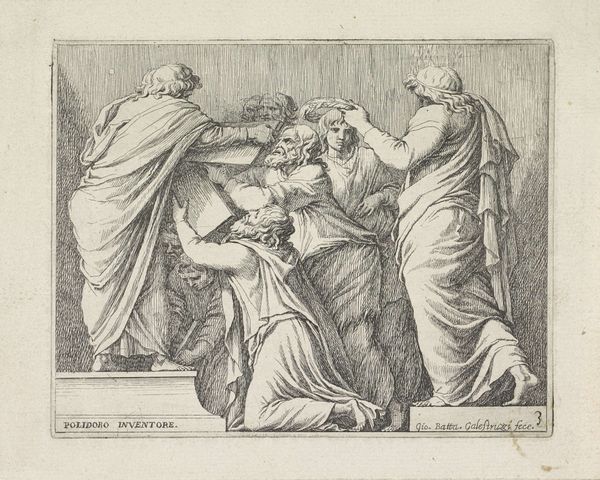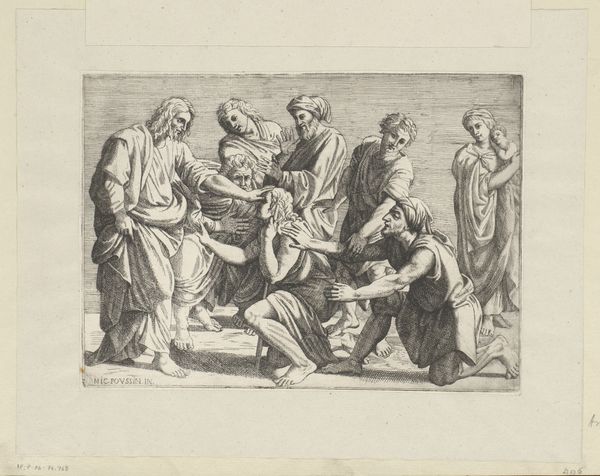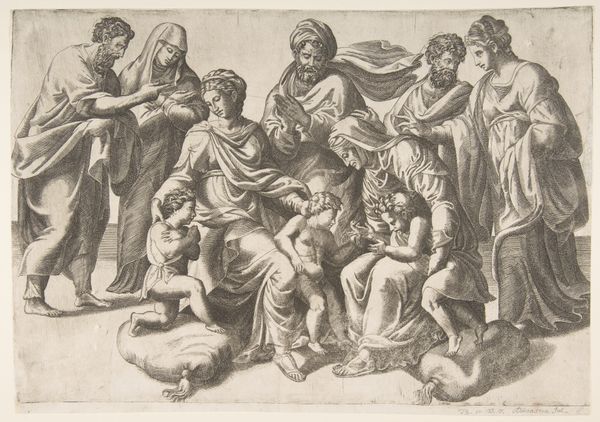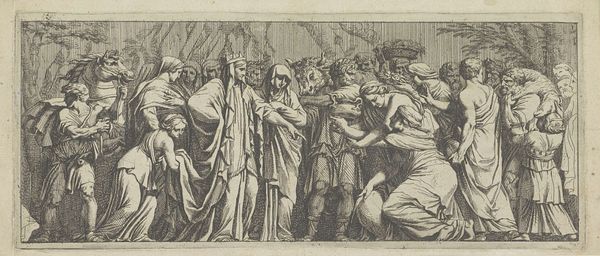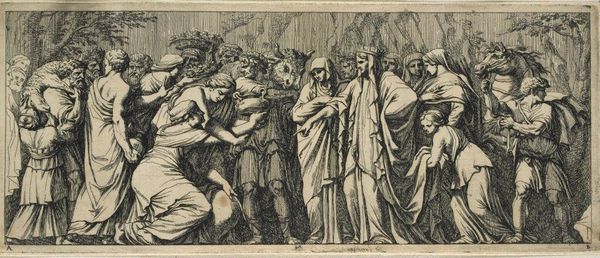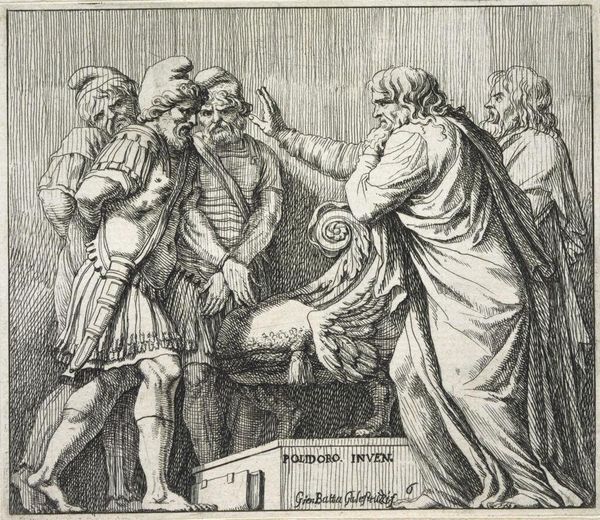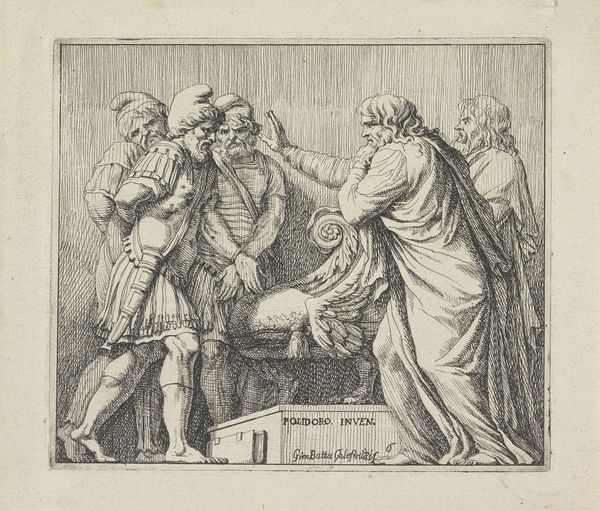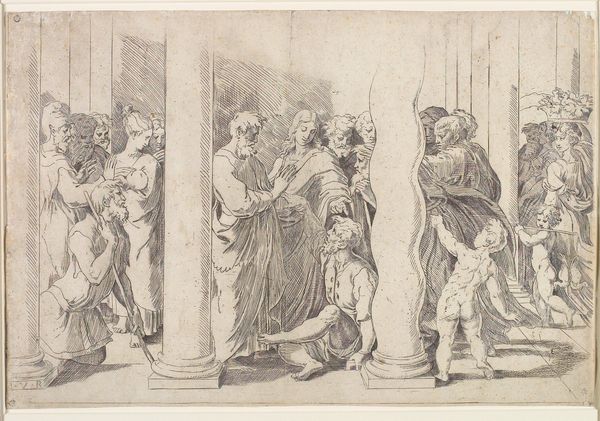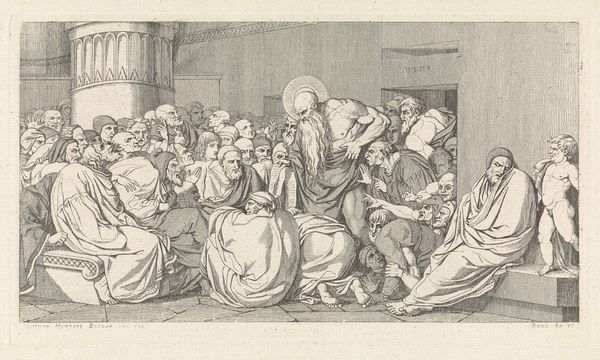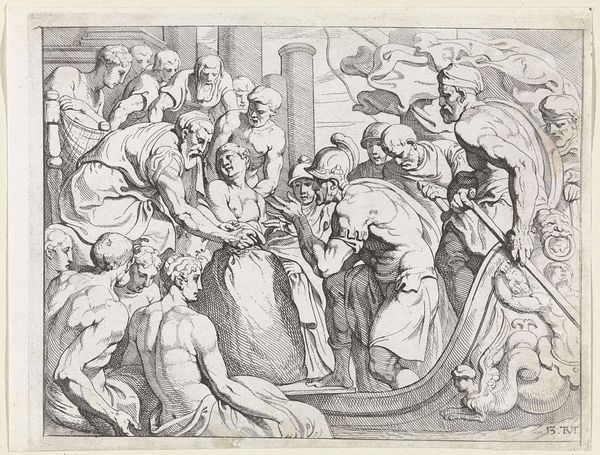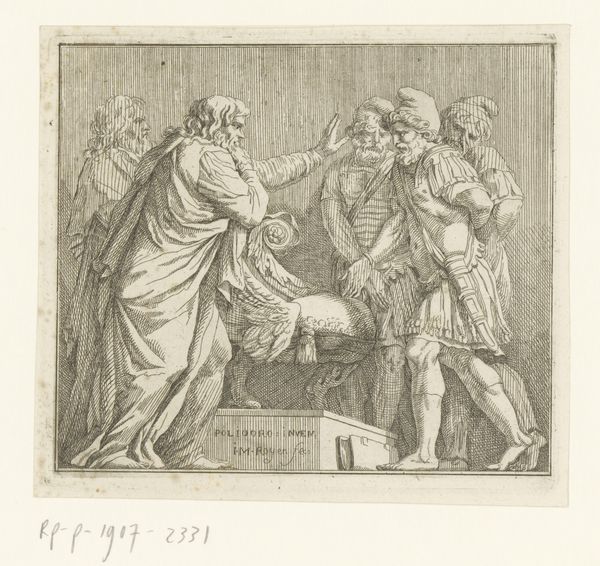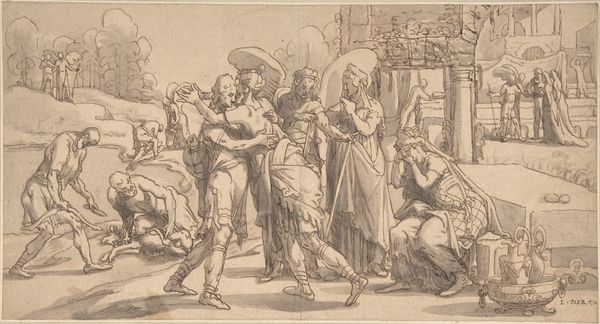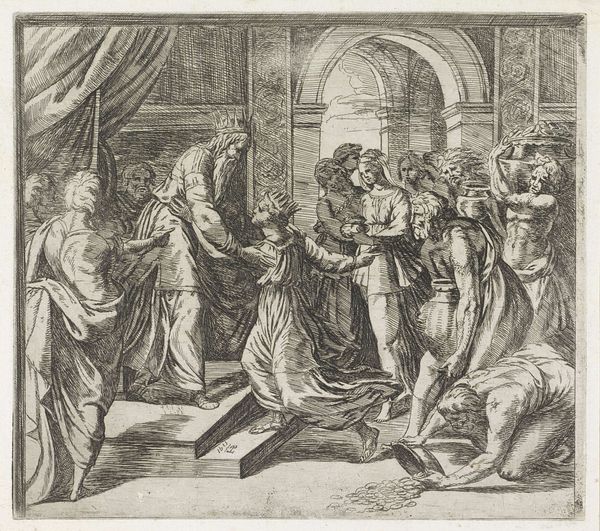
print, etching
#
narrative-art
#
baroque
# print
#
etching
#
classical-realism
#
figuration
#
history-painting
Dimensions: height 115 mm, width 145 mm
Copyright: Rijks Museum: Open Domain
Giovanni Battista Galestruzzi etched "The Family of Darius Before Alexander" in the 17th century, capturing a moment of supplication and conquest. Alexander, adorned with laurel and armor, sits enthroned with a lion at his feet, a clear display of power and victory. Consider the gesture of the kneeling figures, a motif that echoes through centuries, from ancient Roman depictions of conquered peoples to Renaissance portrayals of religious submission. This act of kneeling signifies not only defeat but also a plea for mercy, a universal language of vulnerability. The laurel wreath, a symbol of triumph since antiquity, reappears on Alexander's head, linking him to a lineage of heroes and emperors. It's a visual echo, reverberating through history, each appearance subtly shifting its meaning, yet always evoking notions of honor and achievement. The emotional weight of this scene, heavy with the tension between conqueror and conquered, resonates even now. Symbols like these reveal how history is alive, constantly reshaping itself through the art.
Comments
No comments
Be the first to comment and join the conversation on the ultimate creative platform.
